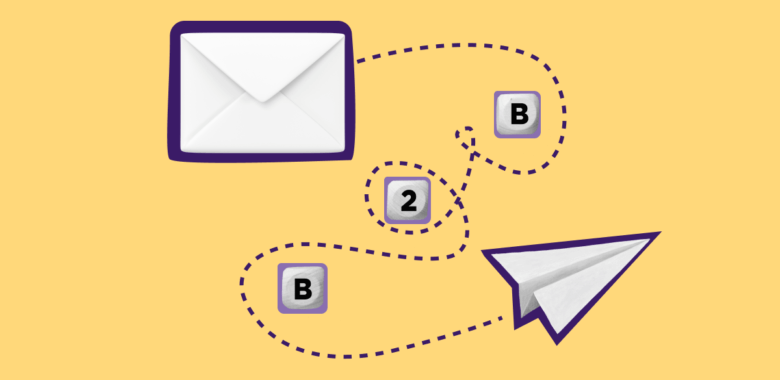How to write a B2B cold email
While writing a cold email, a marketer should find a balance between being informative and being brief. That can be quite frustrating, especially when you have no experience with cold letters. Don’t worry though — these tips will help you through. Moreover, you will find several cold letter templates to make B2B cold email writing a lot easier and more on point.
Think about the subject line
33% of readers decide whether to open an email or not depending solely on a subject line. That’s your gatekeeper — no matter how good the newsletter itself, it may not be opened at all if the subject line is not catchy. Might be a good idea to focus on crafting and testing different subject lines to see what works for you.
Here are some cold email subject line tips to consider:
- Personalize. By that, we don’t mean just addressing your recipient by their first name. Let’s say, you’re an email marketing consultant working in an agency and using cold emails to promote the services. You’re sending the same offer to a tech startup, a dental clinic, and a clothes retailer. These prospects have different pain points and backgrounds — try highlighting those in a subject line.
- Keep them short. Some of your recipients may read your email on a smartphone, so your subject line shouldn’t cut off and create a potentially awkward situation. If in doubt, test the email on your phone before sending it.
- Don’t be too formal. While B2B has less room for creativity compared to B2C retail, for example, remember that you’re a person talking to another person. It doesn’t mean you can use TikTok lingo in your subject lines. However, speaking bureaucratese is unnecessary as well. Stick to the neutral, simple, and clear tone of voice instead.
If you’re feeling frisky, you can even try and use funny subject lines for your cold emails — depending on the industry, they may work.
Include a greeting and introduction
Suppose you did a good job and your subject line works. It’s time to introduce yourself and make a good first impression. Stay brief and focus on your recipient’s needs — introduce yourself and tell only what your recipient needs to know at this stage.
In the following example, the sender gives the name of the company, their position in it, and a short explanation of why they’re reaching out in the first place. There are links to the company’s website and the pitch, in case the reader is interested.









